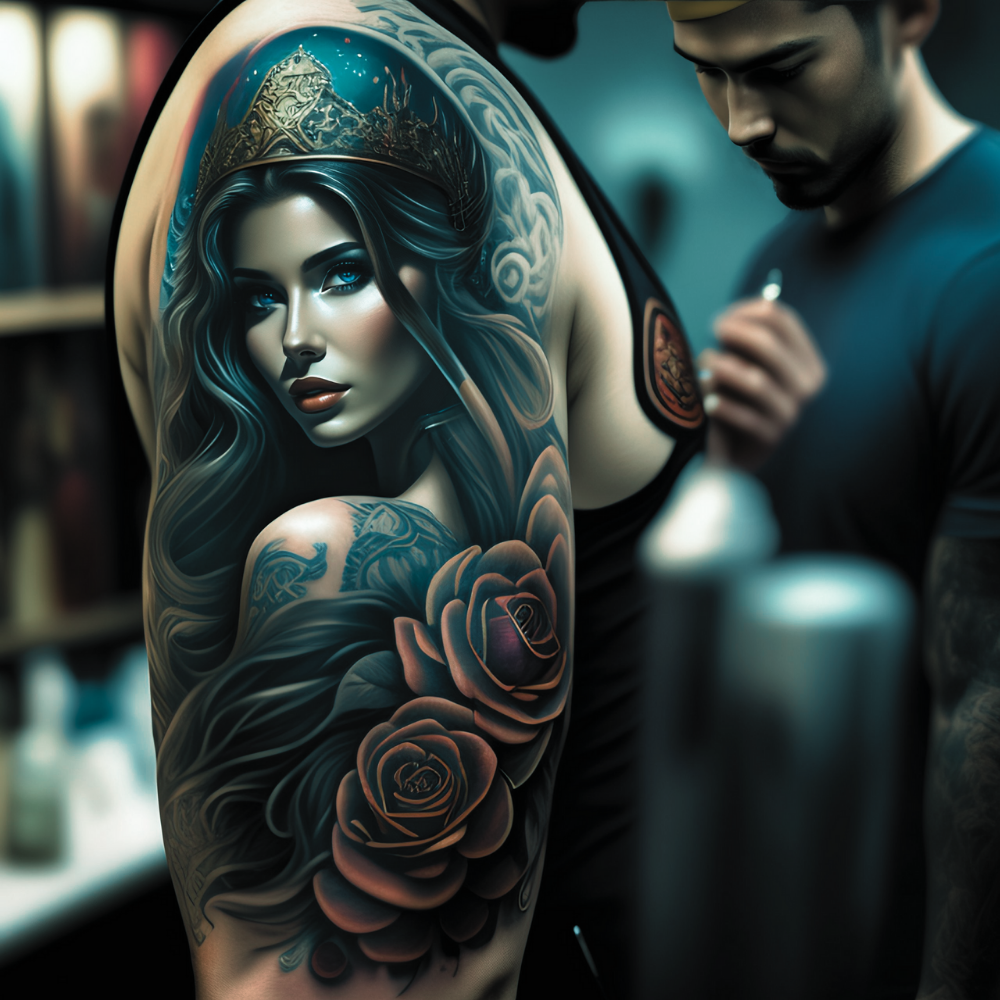Introducing our new AI-powered NFT creator
Creating NFTs has never been easier and fun!

The Intersection of Tattoo Art and NFTs: A Unique Opportunity for Artists

Fernando Segre
March 31, 2023
Non-fungible tokens (NFTs) are disrupting traditional business models, and the tattoo art industry is no exception. The intersection of Tattoo Art and NFTs presents a unique opportunity for artists to grow their business and expand their reach. With the introduction of Dynamic NFTs to create a customizable user experience, we will explore the potential of using Dynamic NFTs in the tattoo art industry.
Understanding NFTs and Their Value
NFTs are unique digital assets that utilize blockchain technology to verify ownership and authenticity. They offer a way to sell, trade, and store digital art with provable ownership, scarcity, and traceability. In the tattoo art industry, NFTs can be applied not just on the creative artistic side of the business, but to expand the business' funnels by creating a seamless user experience.

Generating Revenue Streams with NFTs
Selling NFTs as standalone art pieces is one way for tattoo artists to monetize their digital designs and reach a broader audience. Offering NFTs as proof of authenticity for physical tattoos can add value to a tattoo and provide a unique selling point for artists. Evolving NFTs with traits can offer a dynamic and customizable experience for collectors, potentially increasing the value and longevity of the NFT. We will go through use cases that can be implement at any tattoo parlor.
I. Selling NFTs as Standalone Art Pieces
Creating digital versions of tattoo designs and minting them as NFTs to sell on online marketplaces can provide a new stream of revenue for tattoo artists. The process involves:
- Creating high-quality digital versions of their tattoo designs: Tattoo artists can use graphic design software to create digital versions of their tattoo designs. They need to ensure that the digital art accurately reflects the physical tattoo and that the quality is high enough to be minted as an NFT.
- Minting the digital art as NFTs: Tattoo artists can use NFT platforms like OpenSea, Nifty Gateway, and SuperRare to mint their digital art as NFTs. They can set the price for the NFT and receive a percentage of the profits from the sale.
- Selling the NFTs on online marketplaces: Tattoo artists can list their NFTs on your own marketplace or like OpenSea, Rarible. They can reach a broader audience and potentially sell their NFTs for higher prices than physical tattoos.
II. Offering NFTs as Proof of Authenticity for Physical Tattoos
Using NFTs as proof of authenticity for physical tattoos can add value to the tattoo and provide a unique selling point for tattoo artists. The process involves:
- Tattoo artists can store a high-quality photo of the physical tattoo that will live on the blockchain, making it unique and traceable.
- Clients can mint the digital tattoo as an NFT to own a design. This process can be done on your own marketplace or public ones such as OpenSea, or Rarible. The NFT serves as proof of ownership and authenticity of the physical tattoo.
- Including the NFT in the purchase of the physical tattoo: Tattoo artists can offer the NFT as part of the purchase of the tattoo as merchandising means. The collector can own the digital NFT and display it alongside the physical tattoo providing a unique selling point for the artist.
III. Evolving NFTs with Traits
Using traits to evolve NFTs can offer a dynamic and customizable experience for collectors and clients, potentially increasing the value and longevity of the NFT. The process involves:
- Creating NFTs with traits: Tattoo artists can create a set of NFTs with different traits, such as color or design variations. Each NFT can represent a unique version of the tattoo design.
- Offering exclusive traits: Tattoo artists can offer exclusive traits to collectors, such as limited edition designs or unique features. This can create a sense of exclusivity and increase the value of the NFTs.
- Allowing collectors to trade or combine traits: Collectors can trade or combine these traits to create unique and one-of-a-kind design, having the client become part of the design process. This creates a dynamic NFT experience and potentially increase the value of the brand identity with the customer.

The Future of Tattoo Art and NFTs
The future of tattoo art and NFTs is exciting and unpredictable, but adapting to industry changes and trends is essential for growth. Embracing NFTs as a growth opportunity for tattoo artists requires a willingness to learn and experiment with new technologies. With the potential for increased revenue, a broader audience, and greater creative freedom, NFTs offer a promising avenue for tattoo artists to expand their business and build a sustainable career.
Understanding the value of NFTs is an essential steps for tattoo artists to take advantage of this emerging market. With the right approach and mindset, tattoo artists can use this technology to build a sustainable and profitable growth of the brand and tattoo shop.
Do you have a tattoo parlor and wish to exchange thoughts on how to implement NFTs on your business? One Mint specializes in providing solutions for businesses migrating into the Web3 space. Send us an email and come say hello, we'll be glad to exchange thoughts!
Browse other posts